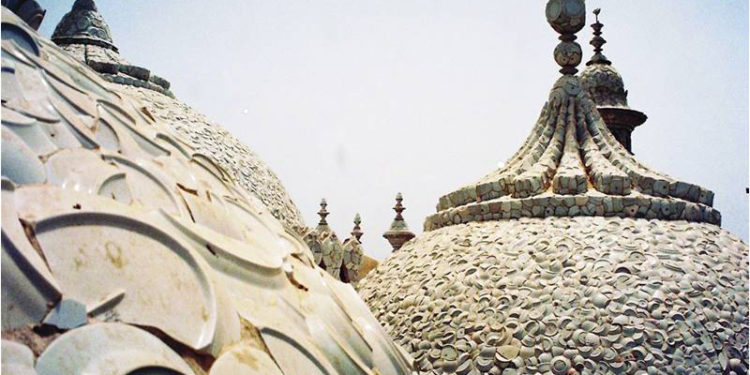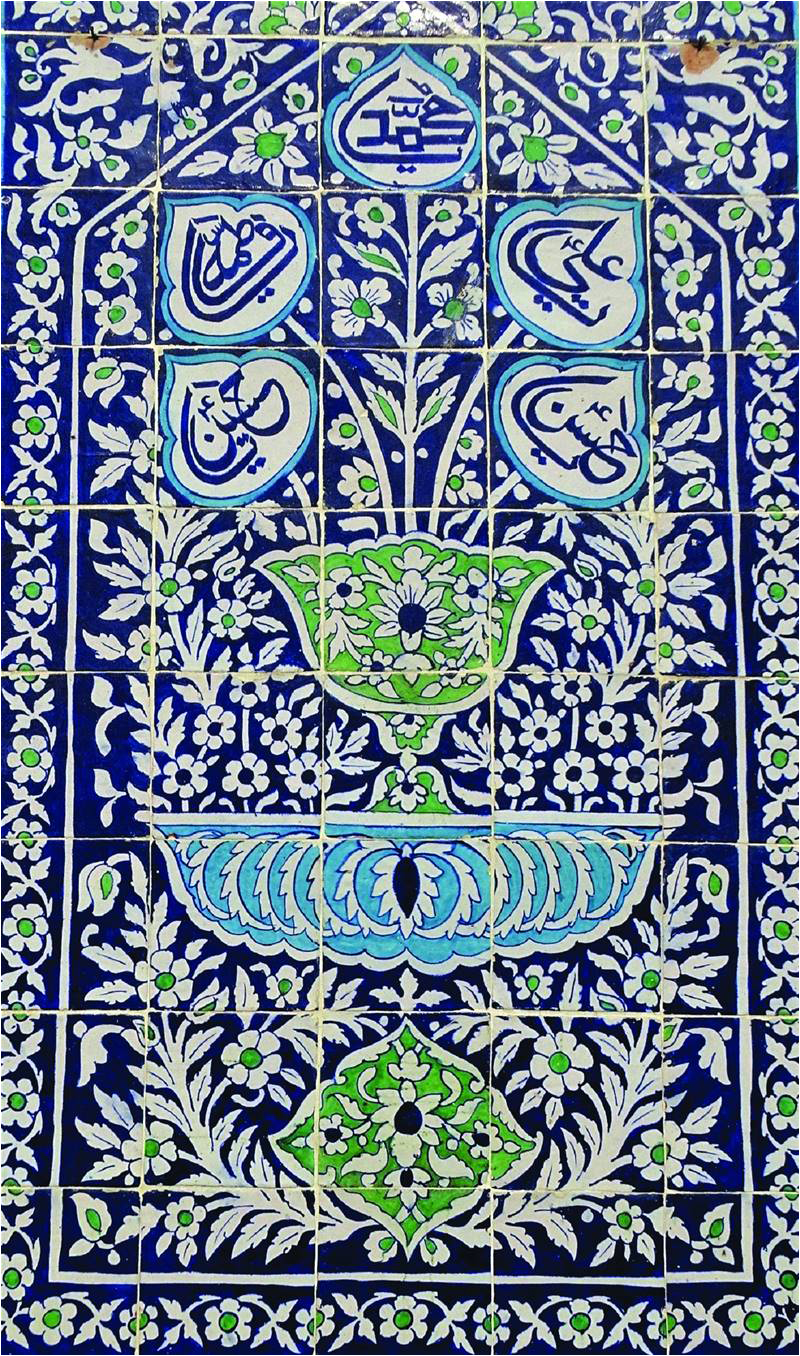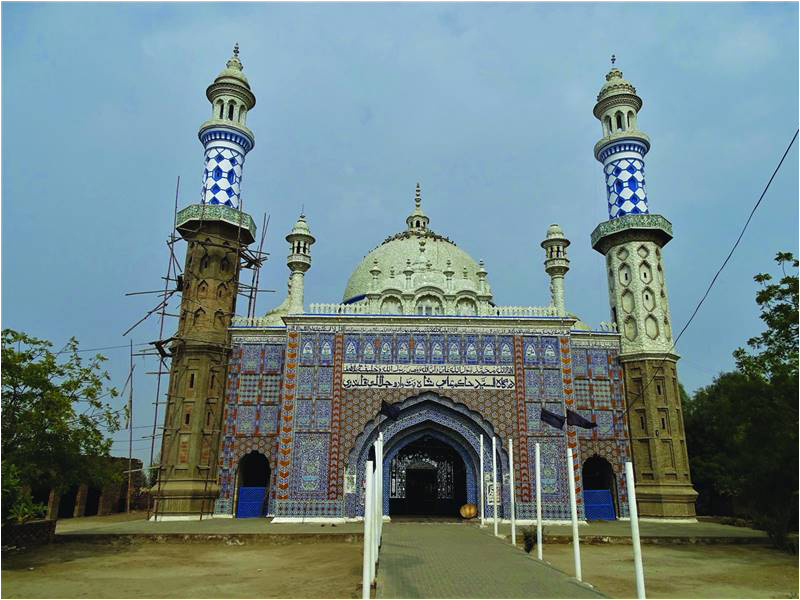
Born in the small village of Pandhi Lashari, in Qambar-Shahdadkot district, Din Muhammad Lashari displayed his skill from a young age. Each of his buildings has been unique, not only from the work of his contemporaries, but also from his previous creations.
Zulfiqar Ali Kalhoro
Larkana and Qambar-Shahdadkot districts have been home to many great artists and artisans over the years. Masons from the districts have constructed some splendid palaces, magnificent tombs and marvelous mosques, most of which still dominate the landscape of Larkana and Qambar-Shahdadkot districts today. Some of the more prominent masons from the area were Chhuto Mashori, Budho Mashori, Daleel Tanwri, Muhram Samityo and Dildar Chandio who built the tombs and mosques during the Kalhora (1700-1783) and Talpur period (1783-1843 AD).
Focusing on the contemporary period, one name stands out amidst this sea of talent. Din Muhammad Lashari has acquired unrivaled fame in the field of architecture in Sindh and Balochistan, constructing tombs, mosques and other buildings. Indeed, this multi-talented artisan has, over the years, variously been known as an architect, painter and a mason. Born in the small village of Pandhi Lashari, in Qambar-Shahdadkot district, Din Muhammad Lashari displayed his skill from a young age. Each of his buildings has been unique, not only from the work of his contemporaries, but also from his previous creations.

I first met Din Muhammad Lashari in 2000 when he was constructing the domes over the tomb of Syed Hakim Ali Shah Patwaro, a disciple of Lal Shahbaz Qalandar, in Miro Khan tehsil in Qambar-Shahdadkot district. The tomb of Syed Hakim Shah was built by Ghulam Ali Sial of Badah in Larkana district but died before its completion. Syed Ali Akbar Shah, Sajjada Nashin of Syed Hakim Shah Patwaro laid the foundation of the tomb in 1980. The tomb construction continued by his son and by later his grandson. Ghulam Akbar Junejo of Dokri town, a devotee of Syed Hakim Ali Shah Patwaro, donated 2.5 million for the ceramic tiles which were used in decorating the tomb. Two of the masons Ahmad Kashigar and Manzoor Kashigar of Hala started decorating the tomb with ceramic tiles in 2005. The decoration work is still ongoing.
Din Muhammad Lashari only constructed domes over the tomb of Syed Hakim Ali Shah Patwaro. He died of cardiac arrest in 2002.
I visited each of Din Muhammad Lashari’s buildings in Sindh and Balochistan. Lashari was prolific: there are 20 tombs and 8 mosques to his name, not to mention the many houses he also helped design and construct.

The tomb of Fazal Faqir, a Qadiri Sufi of the 20th century, is located about 40 km south of Osta Mohammad in Balochistan, and is one of his more notable works. The tomb is a massive, square building enclosed by a mud wall marked by the use of stucco. The tomb’s interior is also adorned with stucco and paintings made by Din Muhammad Lashari. The peacock motif is particularly prominent and is repeated on the structure’s southern and western walls. The religious buildings also decorate the interior surface of the tomb.
Another of Lashari’s well-known monuments is a three-domed mosque in Jhal Magsi district. The mosque was heavily damaged in the 1960 floods, and Lashari was commissioned by Sardar Saifullah Khan Magsi to renovate it. The new mosque is rectangular in shape and is flanked by two towering minarets. It has been named after the Sardar who paid for its renovation. And, indeed, no expense was spared, as the façade of the building is lavishly decorated with glazed tiles and the interior is bedecked with paintings. One finds a variety of floral designs in this mosque.
Din Muhammad also renovated the tomb of Sardar Ahmed Khan Magsi, the hero of the Battle of Bungah, a battle which was battle fought between the Magsis and Rinds over the issue of cattle rustling in 1829 AD. Din Muhammad Lashari built an enclosing wall and also painted the tomb. He then carried out renovations to the canopies that crown the four corners of the structure.
Sardar Ahmed Khan Magsi’s tomb was damaged in the 1960 floods. The domes that crowned the structure are believed to have been swept away by floodwater. The graveyard remains partially submerged in floodwater for some time, and the tombs of Qaiser Khan Magsi and Mehon Khan Magsi, also tombs Lashari renovated, were also flooded.
Besides buildings in Balochistan, he also constructed several buildings in his hometown, Shahdadkot. Here, he erected the Tajar (wagon-vaulted tomb), in which many Sardars of the Khuhawar tribe are buried. In addition to this, he also built the tomb of Ghafoor Shah. While small, this tomb is noted for its conical dome. Each of Lashari’s structures is different from the other, and they have withstood the vagaries of the weather and the passage of time to stand as testaments to his great workmanship
Of all of his structures, however, surely the most imposing is the mausoleum of Syed Hakim Ali Shah Patwaro. Din Mohammad Lashari used a very particular and distinctive technique to render his domes. This technique has since diffused to other parts of upper Sindh. Broken shards of Chinese pottery were pieced together and attached to the domes, leaving them glistening in the sun. From a distance, it appears that the domes are covered with pieces of glass. Indeed, the interior of the tomb is decorated with a variety of glasswork.
The mausoleum of Hakim Shah is built in a square and is flanked by two three-storey minarets which rise to a height of 40 feet. The tomb has two portals, one each on the south and east walls, a deep recessed alcove on the northern wall and an arched niche on the western side. Its roof is crowned by five small domes, with another, larger, dome resting on an octagonal drum to complete the set. An arched rib runs around the drum to separate it from the dome which rests upon it. Finally, the dome is capped by a beautifully made inverted lotus.
Save for the tomb of Janullah Shah Rizvi, in Rohri town, the mausoleum of Syed Hakim Ali Shah Patwaro has no parallel in Sindhi contemporary architecture. It was this tomb that made Din Muhammad Lashari a mason of great repute in Sindh, although the major portion of the tomb was built by Ghulam Ali Sial but Din Muhammad Lashari’s construction of domes and their embellishments with broken Chinese plates made him famous. Today, though, he is sadly no longer with us.
He lives on in the magnificent mosques and tombs that he created in both in Sindh and Balochistan.
____________________
 Dr. Zulfqar Ali Kalhoro, an anthropologist, has authored 12 books including ‘Symbols in Stone: The Rock Art of Sindh’, ‘Perspectives on the art and architecture of Sindh’, ‘Memorial Stones: Tharparkar’ and ‘Archaeology, Religion and Art in Sindh’. He may be contacted at: zulfi04@hotmail.com
Dr. Zulfqar Ali Kalhoro, an anthropologist, has authored 12 books including ‘Symbols in Stone: The Rock Art of Sindh’, ‘Perspectives on the art and architecture of Sindh’, ‘Memorial Stones: Tharparkar’ and ‘Archaeology, Religion and Art in Sindh’. He may be contacted at: zulfi04@hotmail.com
Courtesy: The Friday Times Lahore